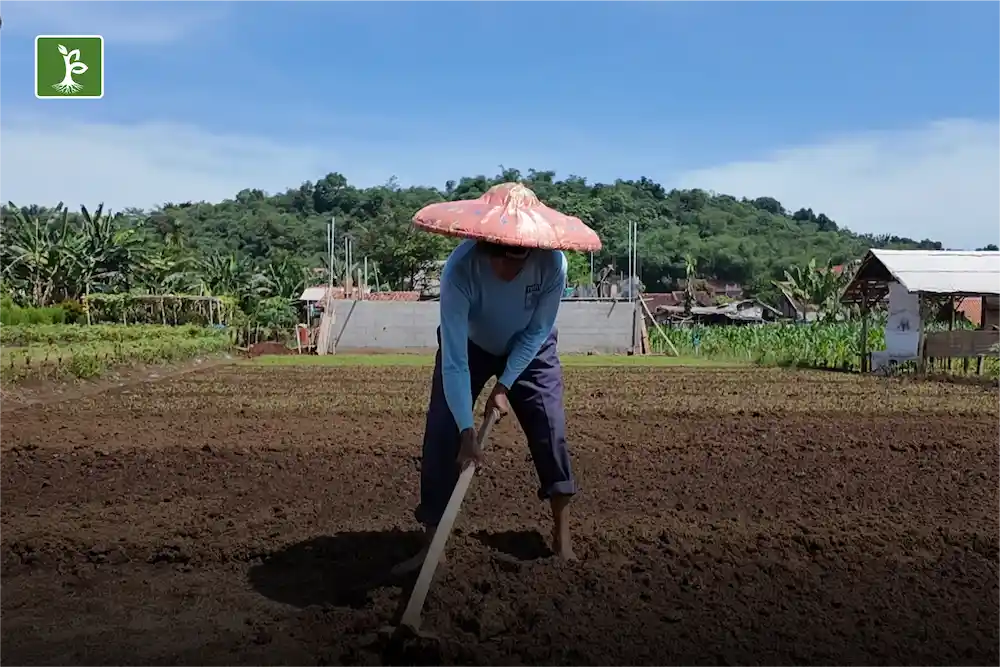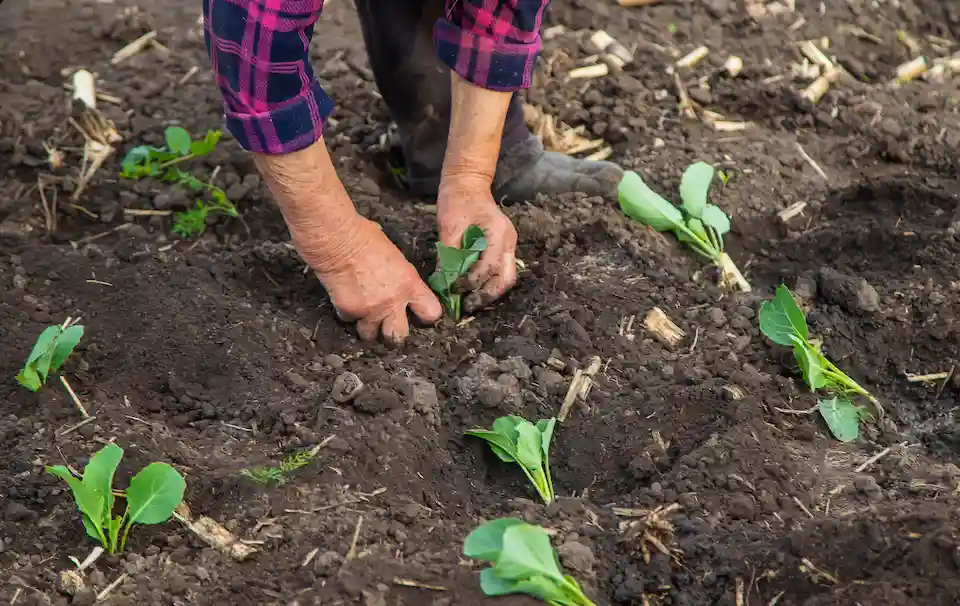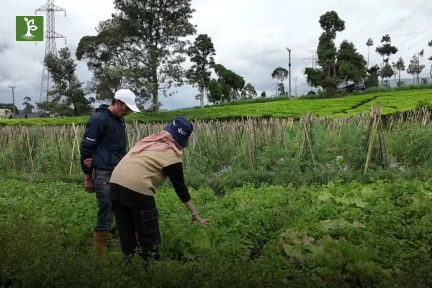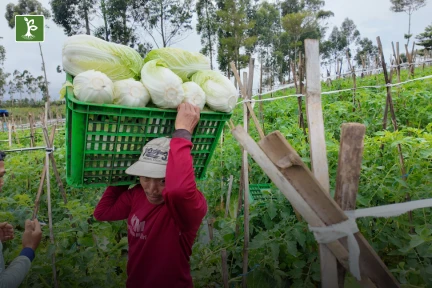Chinese cabbage thrives in cool climates and grows best in highland areas. This plant is well-suited for loose soil, such as loamy or sandy loam soil, rich in organic matter.
To grow optimally, Chinese cabbage requires soil pH levels of 6.0–6.8. Proper care ensures healthy growth, producing fresh and delicious leaves. Below are the steps for cultivating Chinese cabbage:
1. Selecting the Right Variety
Cultivating Chinese cabbage begins with selecting the appropriate variety to ensure optimal results. Popular varieties include Jade Crown, which has curly green leaves and is suitable for low to mid-altitudes, resistant to pests and diseases; Summer Bright, characterized by wide, bright green leaves, compact heads, and a slightly sweet taste.
Green Sun, known for its high yields, round heads, dark green leaves, and adaptability to various conditions; Fine Zone, which features smooth-textured leaves and compact heads, offering a crisp taste ideal for various dishes; and Deli-CR, with rough leaves and round heads, favored for its disease resistance. Choosing the right variety is crucial for successful cultivation, as each has unique characteristics that support growth and yield.
2. Land Preparation

Cultivating Chinese cabbage starts with intensive land preparation in three stages. First, the soil is plowed 30–40 cm deep using a tractor or plowing tools pulled by cows or buffaloes to turn the soil and bring the lower layers to the surface.
Next, the soil is loosened by lightly hoeing to create a crumbly structure and level the surface. The soil is then left for a week to absorb sunlight and air. In the third stage, the soil is loosened again with a hoe to a depth of 30 cm, and beds and trenches are created.
Beds should be oriented east-west for even sunlight distribution. To optimize growth, beds should be 100–120 cm wide, depending on the variety planted. If soil pH is below 6, dolomite lime is applied to adjust the pH.
Organic manure or compost is used as a base fertilizer, applied during land preparation or a week before planting, at a rate of 10–20 tons/ha, depending on soil conditions. Additionally, black-silver plastic mulch may be used to maintain soil moisture and suppress weed growth.
3. Planting the Seedlings

Chinese cabbage cultivation begins with selecting healthy, high-quality seedlings. Seedlings ready for planting should have fresh, shiny green leaves, stand upright, and be free from pests and diseases. Before transplanting seedlings, the soil should be watered a day earlier.
Planting holes, about 8 cm in diameter and 10 cm deep, are made using a heated hole puncher. Each hole may be treated with 0.5–1 gram of Furadan to prevent insect attacks. Once the planting holes are ready, disinfect the seedlings with fungicides and bactericides for 5–10 minutes, then plant them into the holes up to the root neck.
Cover the roots with soil and press lightly to keep the seedlings upright. After planting, water immediately to provide sufficient moisture. Planting should be done in the morning or evening to help seedlings adapt and grow optimally.
4. Replacing Damaged Plants
Replacing damaged plants is essential in Chinese cabbage cultivation to ensure optimal growth. This process is typically carried out a week after planting or when damaged seedlings are found, such as those that are stunted, dead, or affected by pests and diseases.
Damaged plants are removed, and new planting holes are created. Add 0.5 grams of Furadan if needed to control pests like ants or termites. Plant new seedlings, cover them with soil, and press gently to keep them upright. Ensure replacement seedlings are the same age as the existing plants for uniform growth.
5. Watering
Watering is crucial during the early growth stages of Chinese cabbage, as plants require a lot of water for rapid vegetative growth. Watering should be done twice daily, in the morning and evening, especially if black-silver plastic mulch is not used.
As plants enter the flowering and fruiting stages, water needs decrease, and once-daily watering suffices. Maintaining appropriate soil moisture is vital for optimal growth.
6. Weeding
Weeding is essential to ensure the optimal growth of Chinese cabbage. Weeds competing for resources like water, sunlight, and soil nutrients can hinder the growth of cabbage plants.
Manual weeding involves removing weeds by hand or with a weeding tool. Weeds in trenches can be removed with a hoe.
Mechanical weeding uses tools ranging from simple to modern machines like the cono weeder for drylands. Chemical weeding uses herbicides such as Actril DS, Ferninine 720 AS, or Roundup to eliminate weeds. Proper weeding supports healthier, more productive plants.
7. Fertilization
Proper fertilization is critical for optimal Chinese cabbage cultivation. Supplemental fertilization follows the initial base fertilizer application using inorganic fertilizers containing N, P, and K, such as Urea, SP-36, and KCl.
These fertilizers address NPK deficiencies in the soil after organic manure application. The NPK requirements per hectare are Urea (130 kg), SP-36 (125 kg), and KCl (75 kg). Fertilizer timing depends on cultivation methods.
With black-silver mulch, fertilizer can be applied 7 days before planting. Without mulch, fertilizers are applied 7 days before planting, with an additional Urea application 21 days after planting.
8. Pests and Diseases of Chinese Cabbage

Like other plants, Chinese cabbage is vulnerable to pests and diseases that can hinder its growth. Common pests include cutworms, cabbage loopers, flea beetles, armyworms, aphids, and snails, which damage leaves and roots.
Diseases caused by fungi, bacteria, and viruses, such as mosaic disease, black rot, soft rot, root rot, and alternaria leaf spots, can also affect plants. Regular monitoring and appropriate pest and disease management are essential to keep plants healthy and ensure optimal harvests.
9. Harvesting

Chinese cabbage is typically harvested 40–87 days after transplanting, depending on the variety. To determine readiness, observe physical signs: the lower leaves begin to yellow, indicating the plant is entering the generative phase, but flowers have not yet appeared, as flowering reduces crop quality.
Cabbage heads should be large, dense, and compact. Harvest by cutting the base of the stem near the soil surface with a sharp knife or sickle, taking care to avoid cutting leaf stalks and keeping the head intact. After harvesting, place the heads in a shaded area to prevent wilting or shrinking from direct sunlight.




